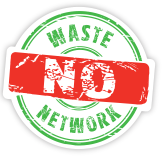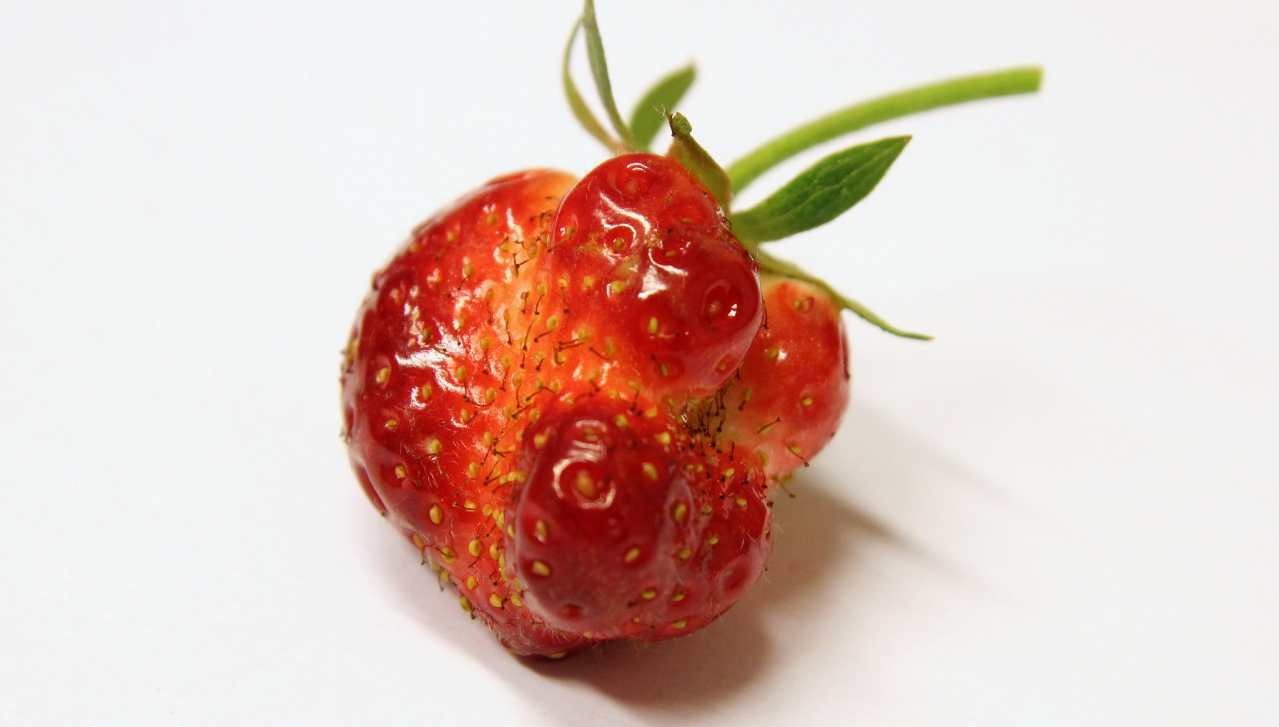15-03-2016 | Modern farming has a huge problem with food waste, stemming from the mismatch between specific food buyer requirements vs Mother Nature delivering an unsaleable overabundance and/or producing knobbly fruit and veg that gets devalued on aesthetic grounds. But what happens when you throw a bit of technology into the mix?
Silicon Valley based startup Full Harvest is trying to find out, citing figures that suggest — with more than 15 per cent of that occurring at the farm level. Other startups are also looking for ways to address the problem, such as Oakland-based Imperfect Produce which delivers direct to consumers. But Full Harvest is going to the source — addressing the needs of large farms and food buyers.
The bootstrapping startup has built a b2b tech platform with the aim of turning a profit out of “imperfect and surplus” fruit and veg. It’s doing this by aggregating less desirable produce from multiple farms in order to simplify the seconds selling and buying processes so that gluts and/or rejects can still have enough value to end up on the plate — rather than be thrown away at source as supply chain waste.
The platform launched in January and is now being used by “several” farms and food buyers in the West Coast U.S., according to founder and CEO Christine Moseley. Buyers at this early stage are typically seeking cheaper ingredients to put into processed food products. And Full Harvest’s business model is to take a straightforward “traditional industry cut” of each sale made via the platform.
“I’ve spent 10 years both in the food industry and the logistics industry, and throughout my experience I found major inefficiencies in our food chains,” says Moseley, who moved to San Francisco a year and a half ago to focus on trying to fix the food wastage problem, with the overarching ambition of doing something to give healthier eating a boost too.
“My goal was to focus on bringing down the cost of healthy food products and this was a huge opportunity I saw in order to solve that — to figure out a way to capture this imperfect and surplus produce and aggregate it and bring it to food companies,” she tells TechCrunch.
The agriculture industry was also, in her eyes, ripe for being disrupted by technology. “They currently pay with paper checks and use emails and text messages and phone calls, so I just saw a huge opportunity there,” she adds. “I found that the biggest problem was the fact that there wasn’t anybody really helping to create a market for and aggregate the supply of surplus produce for these institutional b2b food companies.”
A huge part of the food wastage problem is down to the economics of the food industry, with farm produce falling broadly into two buckets: the perfect stuff that satisfies food buyers by checking all their boxes regarding quality and quantity and thus fetches a good price. And then everything else — whether it’s surplus or seconds — which is so devalued by the economics of large scale food buying it might only fetch “pennies on the dollar” and thus may not even be worth farmers’ while harvesting, says Moseley.
So Full Harvest aims to incentivize farmers not to waste food by creating a better market for this type of second class produce — opening up low friction additional revenue streams for them.
From the buyer side the platform also aims to remove some of the wrinkles that stand in the way of seconds being utilized. Consistency and quantity are key considerations here, according to Moseley, and it’s those factors a tech approach can help with, she argues.
“Our technology is really focused on solving the problem that technology has yet to solve which is making it extremely simple and easy for the farm to make transparent what they have available at the touch of a few buttons. Right now the biggest challenge is incentivizing farms, who’re very busy, they have their core competencies of focusing on the farm. And right now on our platform it takes them literally two seconds to make these companies aware of what they have.
“And in aggregate it allows enough supply to be available so that these food companies can make their weekly purchase orders — which has been one of the problems that hasn’t been solved. How do you allow these food companies, on a consistent basis, to order this lower cost surplus and imperfect produce?”
But how is Full Harvest able to pay farmers enough for their seconds they are incentivized to sell them? In part because it’s utilizing technology to create economies of scale but also because food prices have been so squeezed within the industry that there’s an opportunity to create a middle pricing tier, according to Moseley. It is also offering flash sales via the platform for very perishable produce that has to be shifted very quickly.
“Using technology helps — we’re co-ordinating everything on the technology, with transportation as well. Our goal is to have on-demand transportation. We don’t take inventory, we don’t own the trucks,” she says, adding: “We are paying more than other people are because we can. We’re still making decent money and we’re still saving money because we’re taking something that was previously free.”
Moseley says she is drawing on specific experience working on the buy side of the food industry to help shrink the gap between expectations on both sides via the design of the platform. The buyer’s incentive to pick up seconds is what she describes as “significant savings on their input costs” — so if you make the buying process simple enough the economic incentive kicks in.
“One of the biggest problems in the industry is a translation problem between what the farm deals with what the buyers deal with on an institutional level. So that’s another thing that our technology handles — anything from the fact that with harvest dates that’s something that the farm deals with, but the buyer only cares about delivery dates. Or the fact that farms deal with cartons and buyers only really want to care about pounds,” she notes.
“There’s a lot of user experience that we’ve done with the technology to make sure that it’s solving the sales process but catering to the user needs on each end. And doing it in a very fast, seamless process.”
Working towards more consistent pricing for organic produce is another element she says she hopes the platform will be able to help with in future. “With organics right now buyers are very frustrated with both the fluctuating pricing and the high cost, and how they can’t really control it… I can’t say this 100 per cent with certainty but one thing we are working towards is more consistent pricing so that the buyers can have a better forecast and ability to predict what their input costs are going to be.”
In terms of how it works, farmers log into Full Harvest’s website when they have surplus produce to sell — with the platform normalizing aspects of the data so that, for instance, the buyer gets to see quantities in the form they prefer making it no extra work for them to made an order.
Although Full Harvest’s site is mobile-responsive there’s no native apps yet, but Moseley says that’s because it’s an industry where — “for the most part” — b2b buyers will be sitting at a desk when placing orders so there’s less imperative to develop for mobile from the get go.
Full Harvest is targeting both conventional and organic farms, and Moseley reckons it can make money from both, although organics have been an obvious early focus because of the higher per unit value for this type of produce.
“We’re focused on both,” she adds, when asked whether the startup believes it can turn a profit from conventional as well as organic produce. “We’ve launched with organic but there’s also a lot larger opportunity with conventional as well [in terms of volume]. So that’s why, for the most part, our farms have both — so it’s easy to just scale up.”
Full Harvest has also been focusing on “large farms” (of 1,000 acres or above, with talks to onboard some 30,000 acre farms) to help the platform deliver on its promise of being able to fulfill food buyer orders. So there’s an element of needing a critical mass of supply for the platform to function as promised, but Moseley claims it’s been able to achieve this with its initial clutch of farms. (She won’t disclose any actual numbers on the buyer or farmer side at this early stage.)
“[Large farms] have the most consistent supply of seconds, either because they leave a lot on the field or inefficient harvesting practices or they just have these large customers who are retailers who don’t pick up their produce or reject it for a silly reason. And so that’s how we’re able to create the mass right now to launch the platform, and then we’re adding more and more farms and more and more products,” she says.
“Our focus is really to be the institutional b2b farm surplus sales platform. And be the go-to platform for that just because one of the biggest problems in the food waste space is it’s been really hard to prove out this model — and create scale and to prove that you can do good and make money. That’s what we’re really trying to prove with the large, consistent flow of orders and purchases,” she adds.
While currently selling to “value add” food produce buyers (i.e. companies looking to buy produce as ingredients for other food products they make), down the line the hope is to also expand to target other types of food companies as well — on this Moseley says it’s “in talks with several types of food and beverage companies”.
“We’re talking to food services, and eventually large restaurant chains as well. But for now our focus is on the value added product side just because they don’t really need to care the most out of anyone what the produce actually looks like before it’s processed,” she adds.
“We have some pretty big buyers in the pipeline — strong brand names I can’t really reveal right now but we’re talking to some pretty big players and they’re all really interested because it’s a win-win on both sides.”
While Full Harvest has started in the West Coast US, where the majority of the country’s greens are grown, Moseley says the aim is to expand the platform nationwide — to take in the likes of Florida and its many fruit and tomato growers, and the North East too in time.
The plan is also to start fundraising in the next couple of weeks as it looks to grow its business.
“We have interested investors, we’ve been talking to investors for months and months. I finishedVillage Capital‘s incubator as well — and have lots of connections there,” she adds.
Source: Techcrunch

